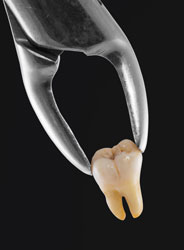 Maintaining healthy teeth is crucial for your overall well-being, but in some cases, a tooth can become a daunting issue. While tooth extraction is no fun and is considered a last resort, there are some situations where it becomes necessary to prevent further complications. In this post, we are going to look at several telltale signs that your tooth needs to be pulled out.
Maintaining healthy teeth is crucial for your overall well-being, but in some cases, a tooth can become a daunting issue. While tooth extraction is no fun and is considered a last resort, there are some situations where it becomes necessary to prevent further complications. In this post, we are going to look at several telltale signs that your tooth needs to be pulled out.
1. Severe Toothache
An extreme toothache that isn’t relieved by over-the-counter pain medication is a sign that something is wrong with the tooth. The pain may be constant or come and go, and it may be worse at night or when you bite down
2. Severe Tooth Decay
When left unaddressed, tooth decay can progress to a point where the tooth’s structural integrity is compromised. If your tooth has decayed to a level where the enamel, pulp, and dentin are damaged, it cannot be saved through conventional filling or root canal treatment. In such a case, extraction is the only viable solution.
3. Advanced Gum Disease
Also referred to as periodontitis, advanced gum disease can result in the loosening of teeth because of the deterioration of the supporting bone and tissues. If the bone loss is severe and your tooth becomes too unstable to stay in place, it is time to have it pulled out.
4. Irreparable Tooth Fractures
If a tooth fracture extends deep into the root, it can affect the tooth’s stability and cause severe pain. If the fracture is too extreme to be fixed through crowns or bonding, extraction may be required. This prevents infection and further discomfort.
5. Affected Wisdom Teeth
Also referred to as third molars, wisdom teeth usually do not have adequate space to emerge correctly, leading to impaction. This can result in pain, inflammation, and even infection. If left unaddressed (through extraction), they can also damage neighboring teeth, hurting your overall health.
Overcrowding and Orthodontic Treatment
In some situations, teeth need to be pulled out in order to make space for proper alignment during orthodontic treatment. Overcrowding can result in difficulty in cleaning, crooked teeth, and an increased risk of dental issues. As such, having a tooth pulled out can help achieve a straighter smile and healthier bite.
The Takeaway
The prospect of having your tooth extracted can be scary, but it is important to recognize the signs that show this procedure is necessary. Keep in mind that your dentist is the best individual to evaluate your oral health and recommend the right treatment. So, ensure you consult them and have regular dental check-ups in Rochester.


 At our Rochester dental office we understand that even if you take extreme care of your teeth, and go out of your way to perform proper dental hygiene, accidents will happen.
At our Rochester dental office we understand that even if you take extreme care of your teeth, and go out of your way to perform proper dental hygiene, accidents will happen.